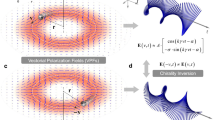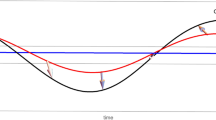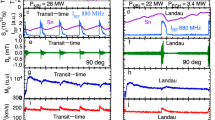Abstract
UNDER this title, in NATURE of April 13, p. 587, Prof. M. Born and K. Fuchs gave some relations between the total and a relative momentum vector of a system of two free particles. They only define the magnitude, not the direction of their relative momentum vector. I believe things become clearer by the following statement. Let Va, Wa (a = 0, 1, 2, 3) be (1 + 3)-dimensional velocity time-space vectors of the particles (V2 = W2 = c2), and m1, m2 their scalar masses. Their individual energy-momentum vectors being ia = m1Va and ja = m2Wa we may define the total energy-momentum vector by the relative energy-momentum vector by These definitions entail two identities which are equivalent to equations (4), (5), (6) of Born and Fuchs.
This is a preview of subscription content, access via your institution
Access options
Subscribe to this journal
Receive 51 print issues and online access
$199.00 per year
only $3.90 per issue
Buy this article
- Purchase on SpringerLink
- Instant access to full article PDF
Prices may be subject to local taxes which are calculated during checkout
Similar content being viewed by others
References
Physica, Ned. T. Natuurk., 7, 330 (1927). Fokker, “Relativiteits-theorie” (Groningen: Noordhoff, 1929).
Physica, Ned. T. Natuurk., 1, 35 (1921).
Nuyens, M., Physica, Ned. T. Natuurk., 9, 181 (1929).
Author information
Authors and Affiliations
Rights and permissions
About this article
Cite this article
FOKKER, A. Mass Centre in Relativity. Nature 145, 933 (1940). https://doi.org/10.1038/145933a0
Issue date:
DOI: https://doi.org/10.1038/145933a0



